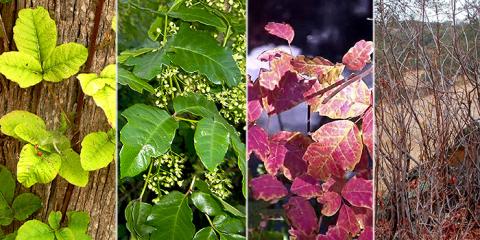I’ve got an itchy feeling
January 07, 2014
I found out the hard way this winter that you don’t have to touch the leaves of a poison oak plant to have an allergic reaction.
Last week I hiked a trail I avoid in the summer because this native deciduous shrub abounds, and I am severely allergic. I even naively remarked to my walking friends how happy I was to be able to use the trail in the winter.
The problem was, the trail was still filled with poison oak. It’s just harder to spot since the characteristic oak-like leaves are missing! And it turns out that urushiol – the toxin that’s to blame for the itchy rash many of us get – is produced year-round and is found also in the stems, roots and sap.
Urushiol is long-lasting.It lingers on shoes, clothes, tools and pet fur. Those of us who are allergic can get a reaction that includes symptoms such as itchy skin, swelling, redness and blisters – simply by touching anything that might have touched the plant. The odds are good that I’m currently suffering all these symptoms because I petted my dogs after they ran through a patch on the trail.
So if you’re allergic, watch out. There is no safe season or safe part of a poison oak plant. Here’s what to look out for through the various seasons:
- Spring: Leaves are a light bright green and have whitish flowers clustered on the stems.
- Summer: Leaves are yellow-green or reddish colors, and may have small white or tan berries.
- Fall: Leaves turn a brilliant scarlet or russet brown before falling to the ground. Berries become darker, dried and wrinkled.
- Winter: Leaves are gone and only bare sticks, whip-like stems or climbing vines remain.
For more information about poison oak and other forest shrubberies, check out a publication recently published by Oregon State University Professor Ed Jensen: “Shrubs to Know in Oregon.”
Norie Dimeo-Ediger
Director of K-12 Education Programs.
